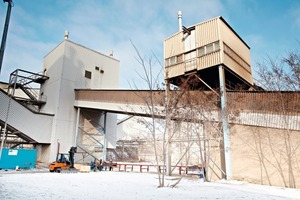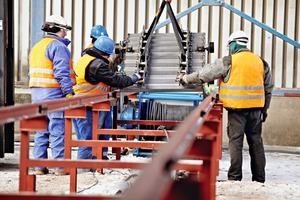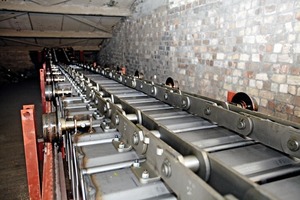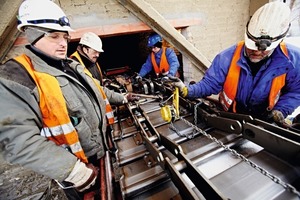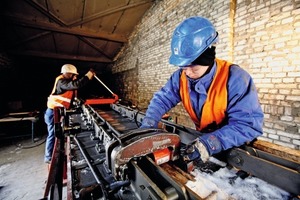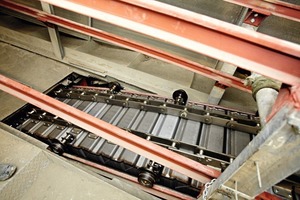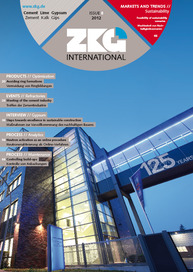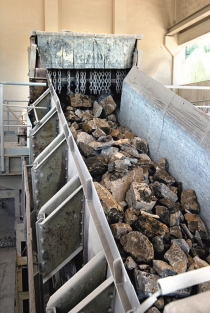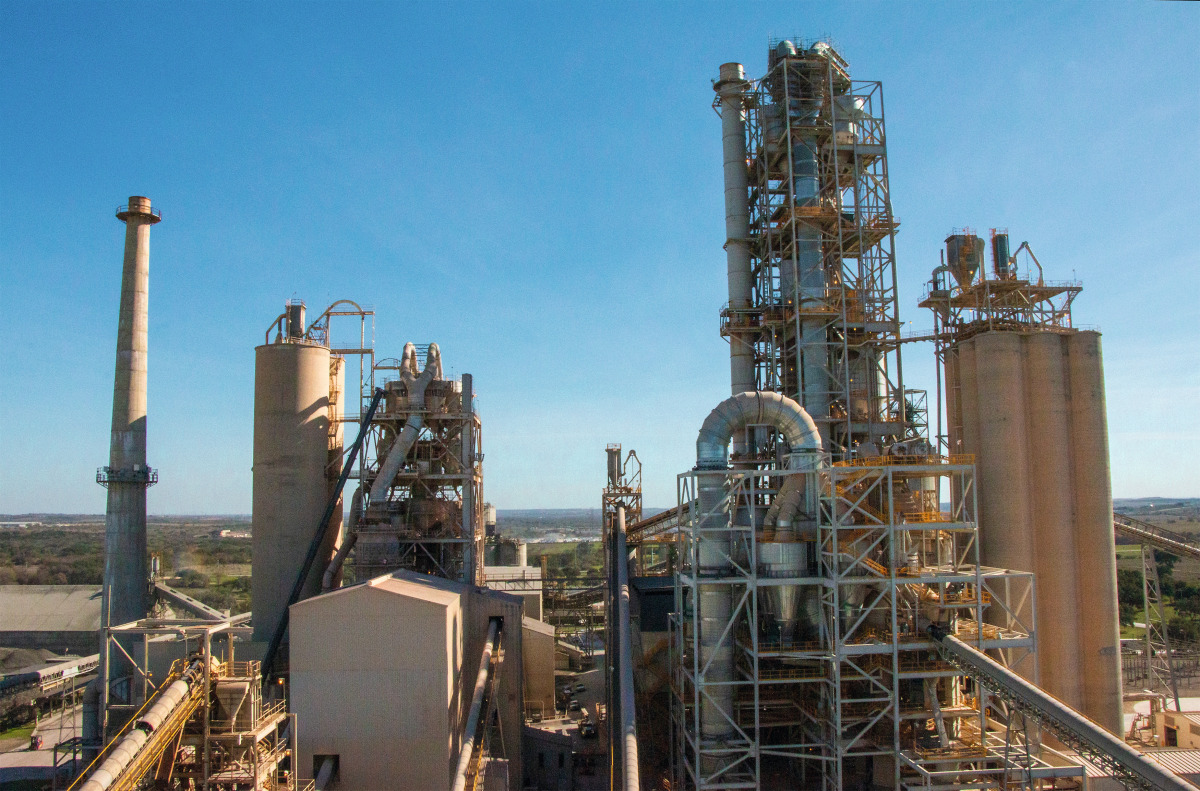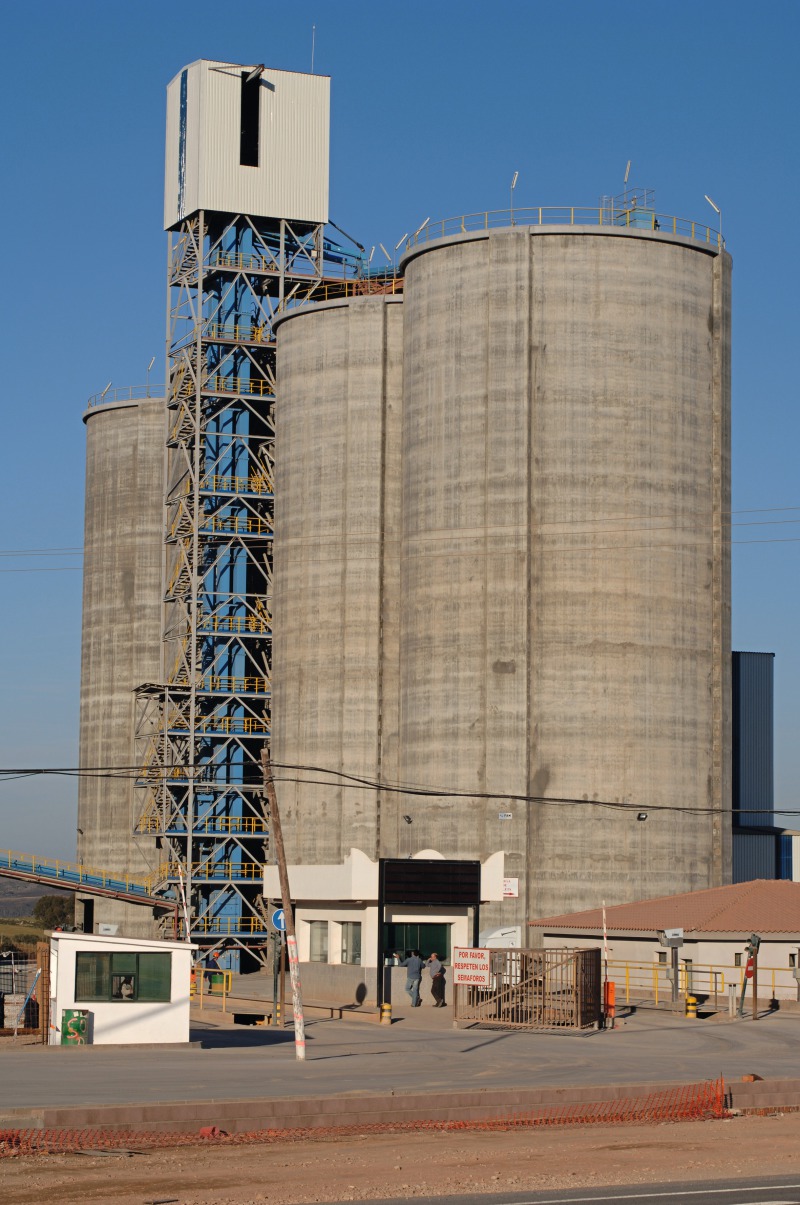Clinker transport upgraded in record time
“This is only manageable with a highly qualified team, good preparation work and a clever system”, emphasised Erwin Last, Aumund Assembly Supervisor.
In contrast to traditional assembly systems, in Rüdersdorf preassembled belt mat segments (Fig. 2) were composed for the track which was installed especially for the preassembly. At the start of the steepest incline of the conveyor, prior to the transfer on to the silo loading belt, the existing conveyor bridge was opened up and a link created between the assembly line and the newly installed track (Fig. 3). Beginning with the lower run, the preassembled belt mats were drawn into position via this new link and connected to a continuous apron conveyor. Then the conveyor bridge was closed again. Employing this system the cold commissioning was performed on 15.02.2012.
CEMEX decided in favour of the proposal from Rheinberg in the face of several competing offers. “On the one hand we know the reliability of Aumund pan conveyors and on the other hand also that the professional repair technology from the Service Division was impressive. We were convinced at the time of the contract signing that the 223 metre long belt could be retrofitted and commissioned in two weeks”, emphasised Bernhard Grabietz, manager in charge of maintenance at CEMEX Ost Zement GmbH in Rüdersdorf. Thus even prior to the contract award the Aumund Assembly and Retrofit Departments had been working closely together and had planned each stage in detail. Armed with this planning the team from Rheinberg travelled to Rüdersdorf and discussed on site the details with CEMEX project leaders as well as the necessary preconditions at the plant.
“The planning was as precise as it was impressive”, recalls project leader Herbert Hermann. “All eventualities and risks were checked out.” In the implementation phase one could see how valuable the planning was. Team and assembly technologies were so finely in tune with each other that even the unexpected arctic temperatures could not endanger the planning. “It was an impressive concept!”
The deep drawn pan conveyor (type KZB 250-1000/400) for the clinker transport between cooler and silo is designed for a capacity of 450 t/h. With its centre distance of 223 metres it is one of the longest conveyors which Aumund has to date installed in the area of clinker transport. En route from the cooler to the transfer tower it changes the angle of inclination four times, both concave and convex. Before the transfer tower it inclines at an angle of 11° up to the material transfer.
Length and topography of the conveyor were however not a particular obstacle in Rüdersdorf, that role was played by the arctic temperatures (Fig. 4). “At up to minus 22 °C we selected the coldest time of the year”, laughed the supervisors Manfred Behrens and Hendrik Weyde. In this scenario cold hands and feet do not even appear on the list. That is merely unpleasant. The negative influence on the time schedule is worse: “At such temperatures the rails and supports need to be preheated before they can be welded”, explained assembly experts Behrens and Weyde in addition: “If you don’t do it you risk cracks in the weld seams. To that extent the temperatures held us up and knocked us back for a while.”
The starting shot in the race against time was fired on 01.02.2012. In the chosen two-shift system, initially with 14 personnel (daytime) and 12 personnel (nights) both tunnel and conveyor bridge were cleared in just four days. Then began the erection of the new track and introduction of the belt mat. Once again in a two-shift system – this time with eight personnel – the assembly was performed under the leadership of one supervisor per shift, “Here it was a round the clock operation so that everything was achieved on time”, confirmed Behrens.
The hot commissioning of the pan conveyor was carried out as planned on 18.02.2012. Since the restart of the kiln the clinker transport in Rüdersdorf is once again running reliably and without interruptions.

